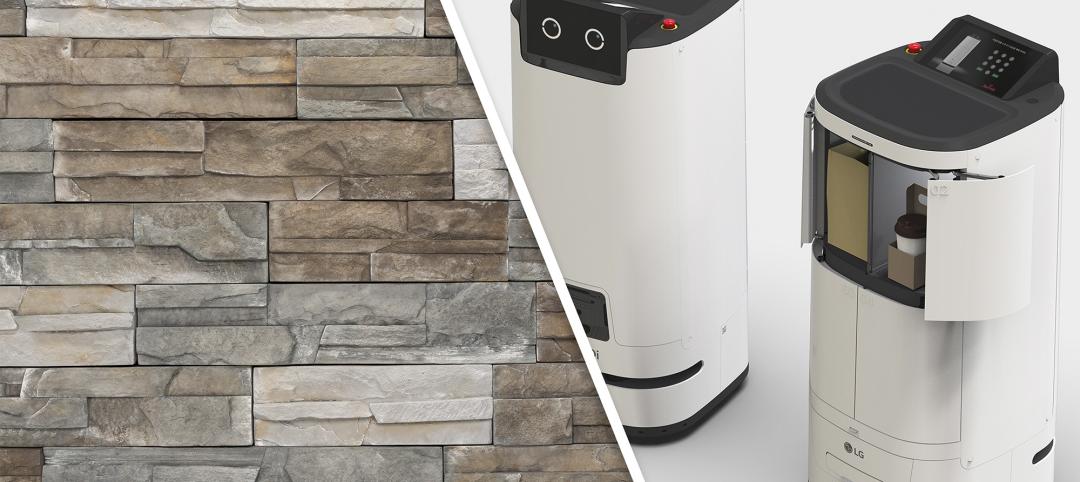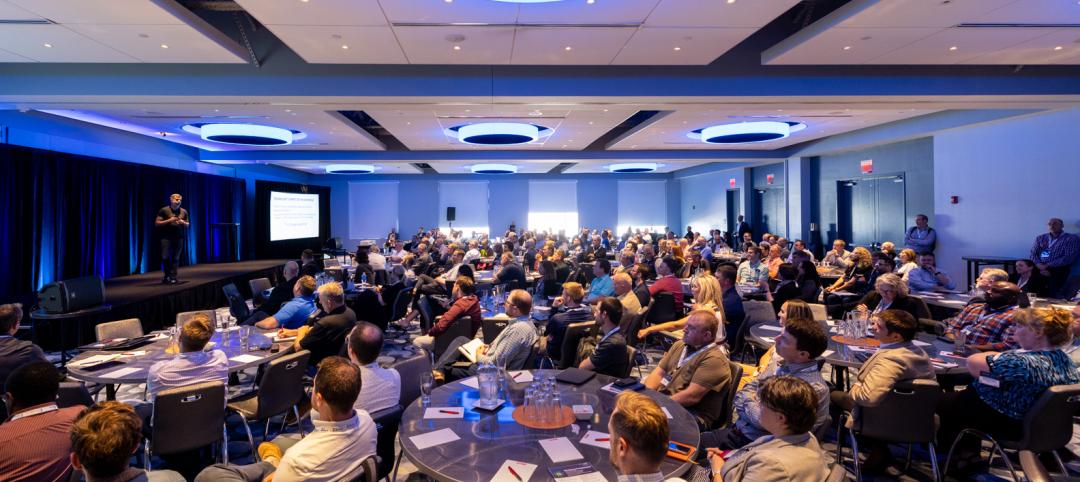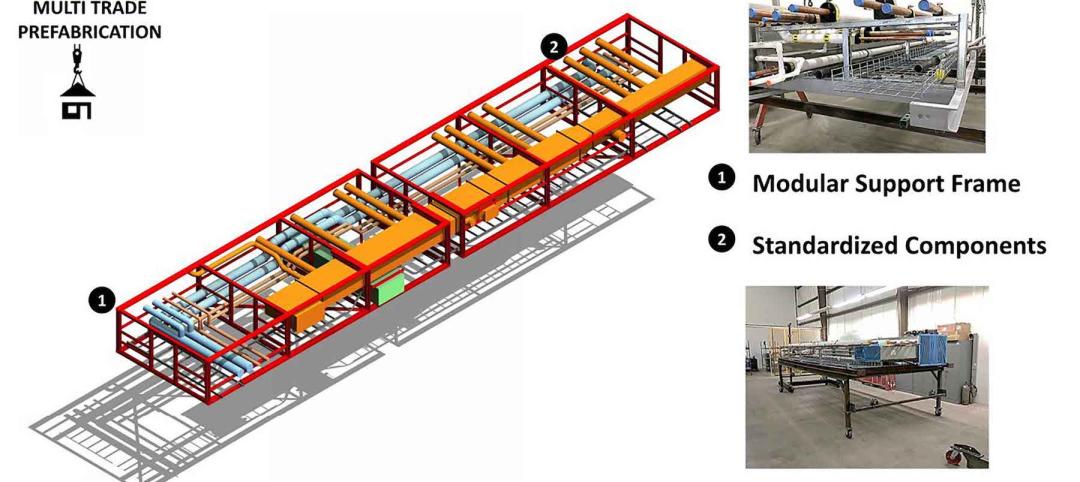Felicite Moorman remembers receiving a call from a multifamily property manager whose building was struggling with its thermostat system. “For one thing, the system wasn’t designed for multifamily; for another thing, the system had very little property management control capability,” she recalls.
The year was 2013, and Moorman was CEO of BuLogics, which specializes in providing wireless solutions for the Internet of Things. Her company had just launched StratIS, a wireless access, energy, and automation control, whose app gives property owners and managers the ability to create setbacks on thermostats and heating systems.
In short order, StratIS has made an imprint on the market. In 2014, it established a partnership with Jonathan Rose Companies, a green real estate policy, development, project management and investment firm, through which StratIS installed its pilot systems. Last year, StratIS struck a partnership with the door hardware manufacturer Schlage, which had introduced its Schlage Control Smart Locks that are designed for multifamily property owners, and whose ENGAGE technology enables lock control from the cloud via mobile applications that are compatible with StratIS’s access platform.
By late November 2015, StratIS had at least one of its products in 72,000 multifamily and hotel units in between 250 and 300 buildings. Moorman tells BD+C that between 14,000 and 20,000 of those units are student housing built by American Campus Communities. StratIS’s products also found their way into student housing developed and managed by Campus Apartments.
StratIS markets its software through distributors, integrators, and installers. “We give them something extra to sell,” says Moorman. She adds that StratIS’s products are relatively easy to install in new builds or renovations, with minimal resident disruption. “We precommission everything, which cuts down on the [complexity] of installation. I also test everything on my seven-year-old, and if she can’t use it, we try to figure out what happened.”
Property managers have the option of allowing renters to download StratIS’s thermostat-control app as part of their lease agreement.
Moorman says the next horizon for StratIS could be key cards, although she concedes there is far greater potential liability using this kind of technology for access into multifamily homes than in hotels. Longer term, Moorman sees opportunities for StratIS developing access- and HVAC-control products for the single-family housing market, which she acknowledges will be more competitive.
Related Stories
Airports | Aug 22, 2024
Portland opens $2 billion mass timber expansion and renovation to its international airport
This month, the Portland International Airport (PDX) main terminal expansion opened to passengers. Designed by ZGF for the Port of Portland, the 1 million-sf project doubles the capacity of PDX and enables the airport to welcome 35 million passengers per year by 2045.
AEC Tech | Aug 19, 2024
Harnessing AI to revolutionize architectural design and creativity
Architects are wondering if AI will replace us. For Vessel, the gains offset the fear. We believe there is wisdom in the unattributed quote, “You won’t lose your job to AI. You will lose your job to someone using AI.”
Energy Efficiency | Aug 9, 2024
Artificial intelligence could help reduce energy consumption by as much as 40% by 2050
Artificial intelligence could help U.S. buildings to significantly reduce energy consumption and carbon emissions, according to a paper by researchers at the Lawrence Berkeley National Laboratory.
Products and Materials | Jul 31, 2024
Top building products for July 2024
BD+C Editors break down July's top 15 building products, from Façades by Design to Schweiss Doors's Strap Latch bifold door.
Smart Buildings | Jul 25, 2024
A Swiss startup devises an intelligent photovoltaic façade that tracks and moves with the sun
Zurich Soft Robotics says Solskin can reduce building energy consumption by up to 80% while producing up to 40% more electricity than comparable façade systems.
Great Solutions | Jul 23, 2024
41 Great Solutions for architects, engineers, and contractors
AI ChatBots, ambient computing, floating MRIs, low-carbon cement, sunshine on demand, next-generation top-down construction. These and 35 other innovations make up our 2024 Great Solutions Report, which highlights fresh ideas and innovations from leading architecture, engineering, and construction firms.
AEC Tech Innovation | Jul 4, 2024
Caution competes with inevitability at conference exploring artificial intelligence for design and construction
Hosted by PSMJ, AEC Innovate in Boston found an AEC industry anxiously at the threshold of change.
Contractors | Jun 4, 2024
Contractors expect to spend more time on prefabrication, according to FMI study
Get ready for a surge in prefabrication activity by contractors. FMI, the consulting and investment banking firm, recently polled contractors about how much time they were spending, in craft labor hours, on prefabrication for construction projects. More than 250 contractors participated in the survey, and the average response to that question was 18%. More revealing, however, was the participants’ anticipation that craft hours dedicated to prefab would essentially double, to 34%, within the next five years.
AEC Tech | Apr 30, 2024
Lack of organizational readiness is biggest hurdle to artificial intelligence adoption
Managers of companies in the industrial sector, including construction, have bought the hype of artificial intelligence (AI) as a transformative technology, but their organizations are not ready to realize its promise, according to research from IFS, a global cloud enterprise software company. An IFS survey of 1,700 senior decision-makers found that 84% of executives anticipate massive organizational benefits from AI.
BIM and Information Technology | Mar 11, 2024
BIM at LOD400: Why Level of Development 400 matters for design and virtual construction
As construction projects grow more complex, producing a building information model at Level of Development 400 (LOD400) can accelerate schedules, increase savings, and reduce risk, writes Stephen E. Blumenbaum, PE, SE, Walter P Moore's Director of Construction Engineering.
















